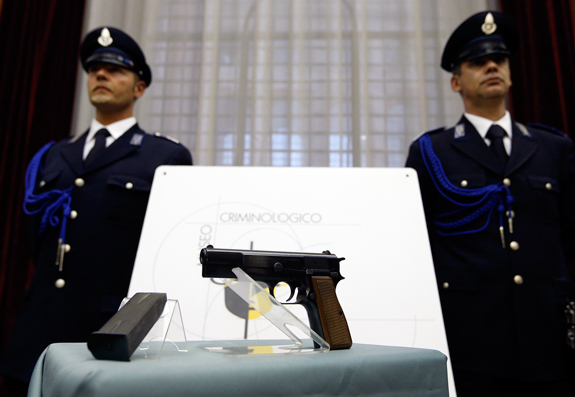by Jonathan Luxmoore

WADOWICE, Poland (CNS) – The designer of a new multimedia museum opened in St. John Paul II’s family home said he hoped previously unseen footage of the saint as a young priest would encourage people “to change their lives” rather than “just heaping praise” on the Polish pope.
“Nowhere can really compare with the pope’s family home, and we expect people of all ages and backgrounds to be touched by what they see here,” Jaroslaw Klaput told Catholic News Service April 26, the day before Pope Francis canonized SS. John Paul and John XXIII at the Vatican.
Break Through Stereotypes
“Virtually everything about John Paul II is already known, from the great encyclicals he issued as head of the church back to the cream cakes he enjoyed as a teenager. But we hope to break through some stereotypes and reveal him in a fuller, personal way,” he said.
St. John Paul was born Karol Wojtyla in Wadowice on May 18, 1920 and lived in the family house until age 18, when he moved to Krakow with his widowed father to study at the Jagiellonian University.
The 3,000-square-foot museum, created over eight years with Polish government and European Union funding at a cost of $8 million, was dedicated in early April by the Vatican’s nuncio, Archbishop Celestino Migliore.
The museum includes the Wojtyla family living room, kitchen and bedroom, with the military uniform and boots belonging to the pope’s father and his mother’s handbag, as well as personal photographs, school reports and other possessions.
The building, purchased for the Krakow Archdiocese in the 1990s, looks out over an adjoining church.
Klaput said the museum would share some objects with permanent exhibitions planned in Krakow and Warsaw and would form part of the developing devotion to the new saint.
“Visitors can touch and experience crucial elements of the pope’s life here, and this should make it an essential point on the pilgrim trail,” he said.
“Some church people, especially those who knew the pope well, have regretted we needed to alter some of the building’s layout. But they all agree its spirit and character have been preserved.”
Exhibits include the silver 9 mm Browning Hi Power pistol with which Turkish assassin Mehmet Ali Agca shot St. John Paul in St. Peter’s Square May 13, 1981 and the bloodstained suit of a papal bodyguard who caught the pope as he fell.
The museum includes the replica of a Wadowice street from the 1920s, as well as robes worn by cardinals at St. John Paul’s 2005 funeral and thousands of petitions in various languages, most seeking help for sick relatives, left at his grave.
